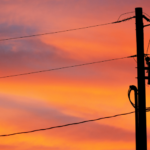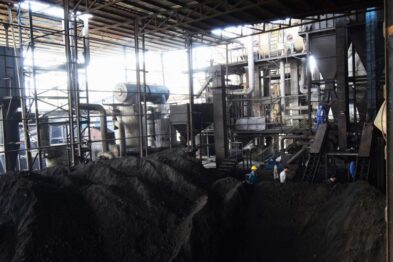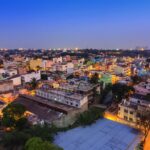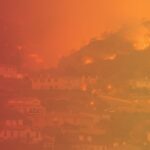Nearly 1.8 billion people around the world live in flood-prone areas. This year alone, parts of India, Pakistan, Korea, and China were battered by monsoon rains that caused flooding and landslides. This is only expected to worsen as more people move to cities and climate change intensifies rainfall and increases sea levels. Meanwhile, in many parts of the Global South, drainage, sanitation, and waste systems have not kept pace, making rainwater and urban flood management a public health challenge. A new study in Nature reveals how extreme rainfall and flooding leads to an increase in deaths—accounting for about 8 percent of deaths during monsoon season in one megacity.
“We have witnessed the impact of rainfall and flooding time and again—traffic accidents, electrocutions, drownings from rising flood waters,” says study co-author Ashwin Rode, Research Assistant Professor at the Harris School of Public Policy at the University of Chicago. “But with poor drainage and sanitation systems, standing floods can also trigger many aftereffects that don’t always make the headlines—diseases like dengue, diarrhea, malaria can flourish, and more. Our study highlights the destruction rains and floods leave in their wake by counting up the death toll.”
Rode and his co-authors Tom Bearpark and Archana Patankar study the impact of rainfall on mortality in one of the world’s largest cities—Mumbai, India. Combining death records with highly-localized rainfall data from several monsoon seasons, they estimate the effects by age, gender, and whether residents live in poor slum areas or not.
They find that rainfall accounts for about 8 percent of deaths during a typical monsoon season—a number comparable with cancer deaths in the city. That represents about 2,300 to 2,700 lives lost during a typical monsoon season. This implies that increased deaths from rainfall and flooding in Mumbai cost the city about US $1.2 billion a year in life years lost. This does not count costs to the city not associated with deaths, such as broader health and welfare, infrastructure, lost labor time, etc.
The impacts from rainfall are not equal. Eighty-five percent of those who die from rainfall live in slum areas. Rainfall deaths make up 11 percent of the deaths of slum residents during a monsoon season, but only 2.4 percent of deaths of those living outside of slum areas. Woman and children are also more impacted by heavy rainfall, with rainfall making up 18 percent of deaths during monsoon season for children under 5—reflecting their vulnerability to waterborne diseases like diarrhea—and 11 percent of deaths for women.
“These results reflect vast inequality in our cities,” says co-author Archana Patankar, a climate change economist and World Bank consultant who founded Green Globe Consulting in Mumbai. “Poor areas experience very different housing, sanitation and drainage systems compared to rich areas, and our most vulnerable are not able to access the resources and healthcare they need. Fortunately, these are problems that can be solved by leaders with targeted infrastructure, disaster management and healthcare changes.”
The researchers also study the co-occurrence of rainfall and high tides to evaluate how future sea level rise may exacerbate the mortality impacts of rainfall. They find that intense bursts of rain, and especially intense bursts of rain combined with high tides, are the deadliest—largely due to inadequate drainage that leads to heavy flooding that often lingers. Intensifying rainfall and sea level rise leads to as much as a 20 percent increase in rainfall deaths over the coming decade, if steps aren’t taken to adapt, the study finds.
“This study is a warning signal that our future could bring many more deaths from rainfall and flooding, but it also points to ways that future could be avoided,” says co-author Tom Bearpark, a PhD student at Princeton University. “If policymakers and other stakeholders use this data to target investments and prepare our megacities for the changes ahead, we have the potential to create a safer and healthier future.”














